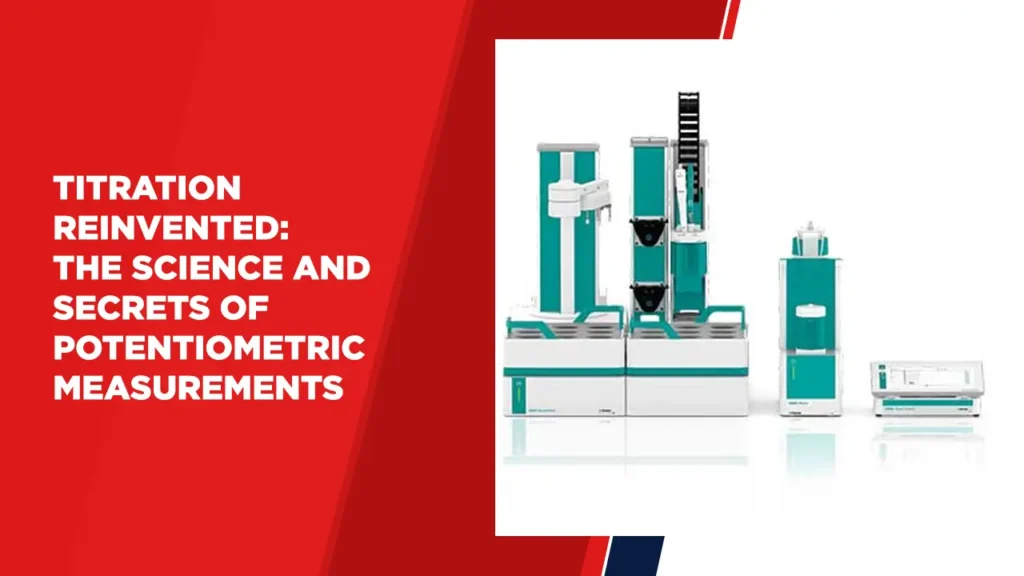Titration Reinvented: The Science and Secrets of Potentiometric Measurements
Introduction:
In the field of chemistry, precision and accuracy are incredibly important. Potentiometric titration has become a method for determining the concentration of a substance in a sample solution. By utilising the principles of electrochemistry potentiometric titration provides not measurements but also a range of benefits that have made it an essential tool, in different industries and research projects.
Principle of Potentiometric Titration:
Potentiometric titration relies on measuring the potential difference between a reference electrode and an indicator electrode as titrant is added to the sample solution. This potential difference, also known as the electromotive force (EMF), changes as the titration progresses. At the equivalence point, where stoichiometrically equivalent amounts of reactants are present, a sharp change in potential occurs, indicating the completion of the reaction.
Defining Potentiometric Titration:
Potentiometric titration involves the titration of an analyte with a titrant solution while monitoring the change in electrical potential. The key to its accuracy lies in the precise detection of the equivalence point, which is achieved through the sensitive response of the indicator electrode to the changes in concentration.
Advantages of Potentiometric Titration:
Potentiometric titration offers several advantages that contribute to its popularity:
High Precision:
Potentiometric titration enables precise determination of analyte concentrations due to the sharp and easily detectable equivalence point.
No Indicator Required:
Unlike other titration methods that require visual indicators, potentiometric titration relies on electrical signals, eliminating the need for indicator solutions.
Wide Range of Applications:
This technique is applicable to a wide range of chemical compounds, making it versatile in various fields, including pharmaceuticals, environmental monitoring, and food analysis.
Quantitative Analysis:
Potentiometric titration allows for quantitative analysis without the need for calibration curves, streamlining the measurement process.
Selectivity:
By employing specific indicator electrodes, potentiometric titration can be tailored for selectivity towards particular ions or compounds.
Applications of Potentiometric Titration:
The versatility of potentiometric titration is reflected in its diverse applications:
Pharmaceutical Industry:
Potentiometric titration is used to determine the purity of pharmaceutical compounds and analyse drug formulations.
Environmental Monitoring:
It aids in measuring pollutants and ions in water samples, contributing to environmental protection efforts.
Food Industry:
The technique is employed for quality control of food products, detecting the presence of additives, acids, and other components.
Chemical Research:
Potentiometric titration aids in the investigation of complex reaction mechanisms and kinetic studies.
Conclusion:
Potentiometric titration stands as a cornerstone in the realm of analytical chemistry, providing precise and reliable measurements crucial for research, industry, and quality control. Its ability to quantify analyte concentrations accurately, its versatility across various applications, and its elimination of the need for visual indicators make it an invaluable asset to scientists and professionals striving for accuracy and efficiency in their analyses. As technology advances, potentiometric titration continues to evolve, showcasing its enduring relevance in modern analytical techniques.




